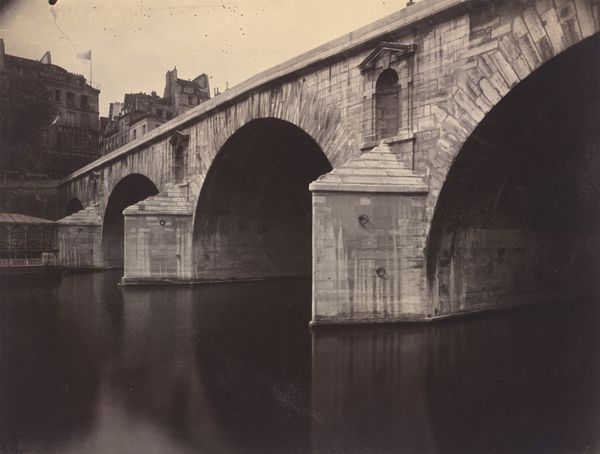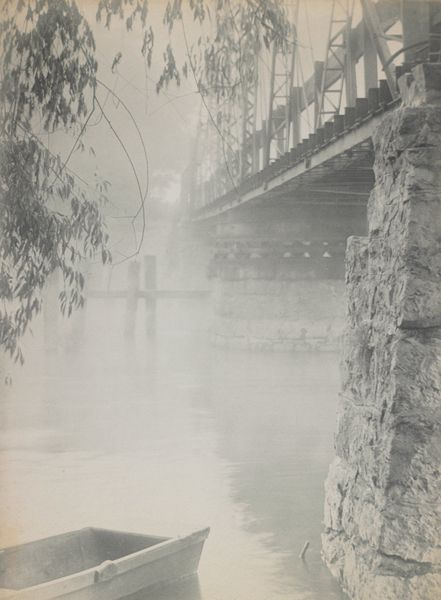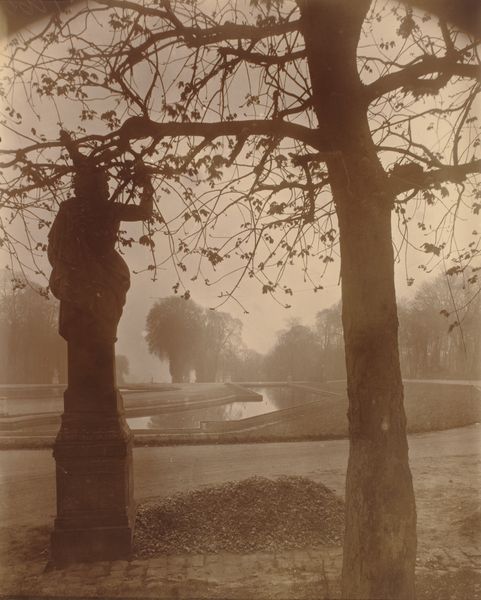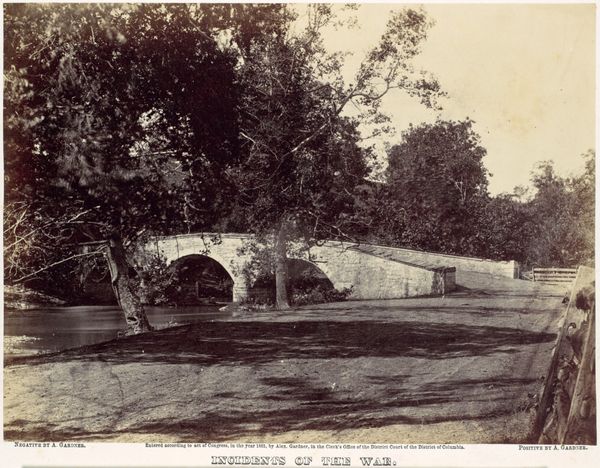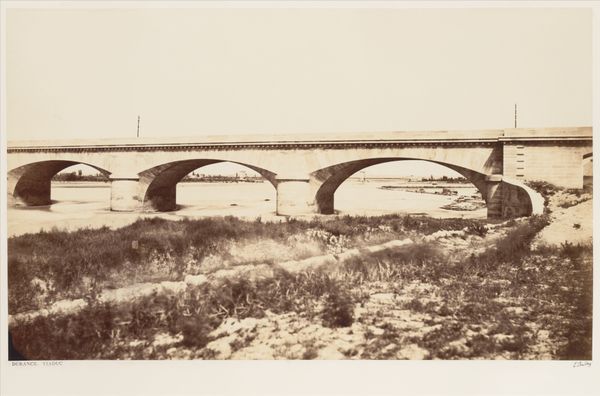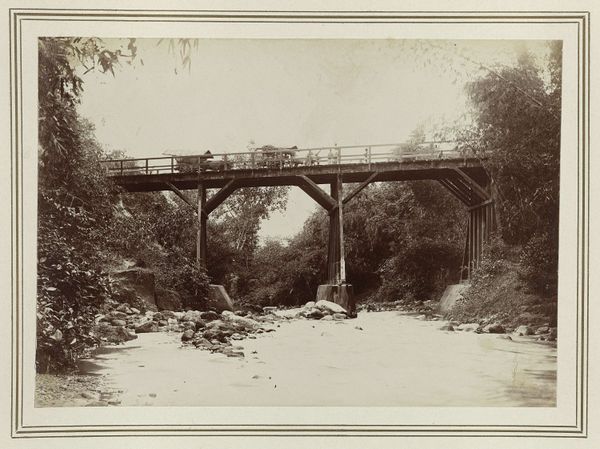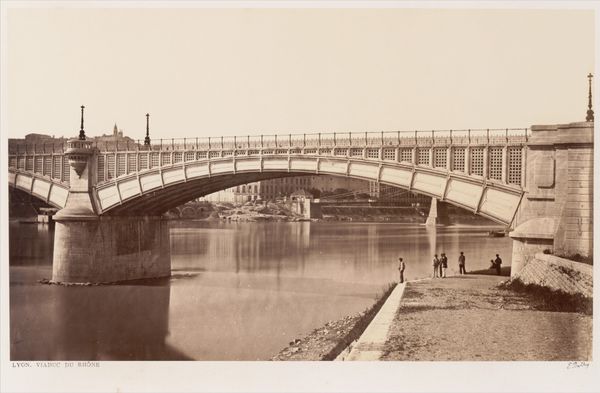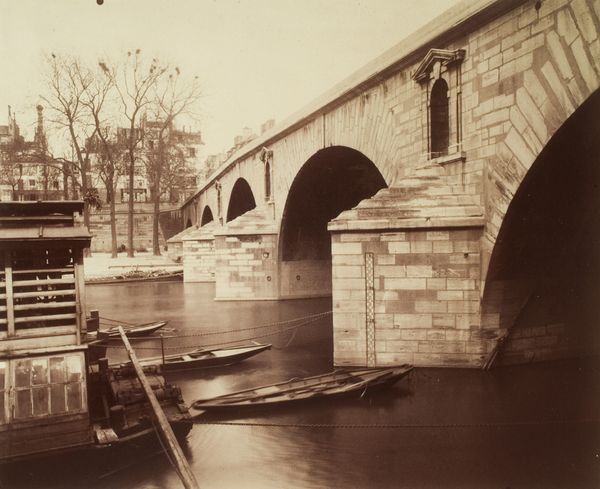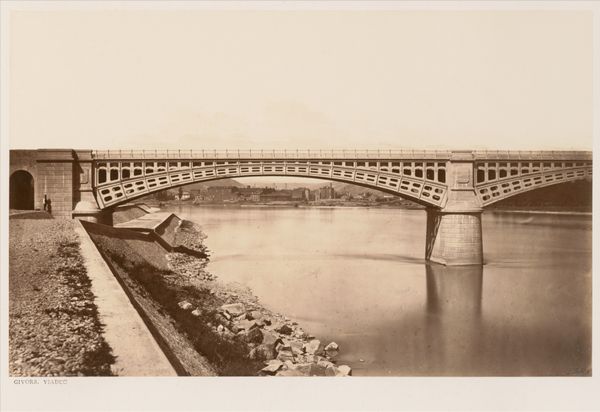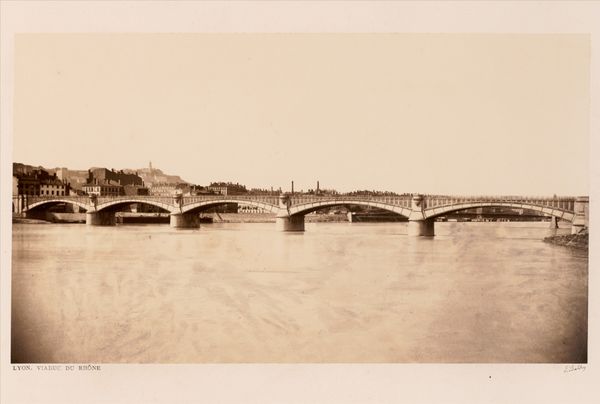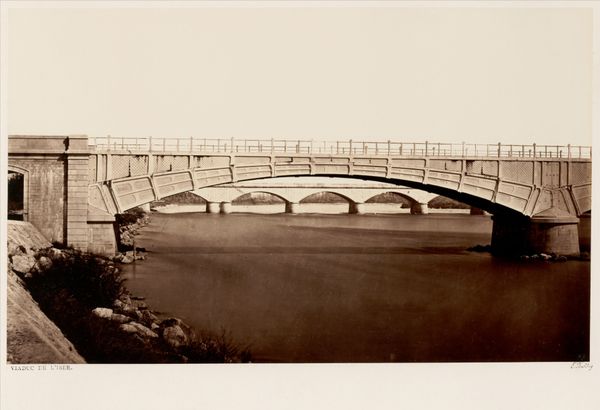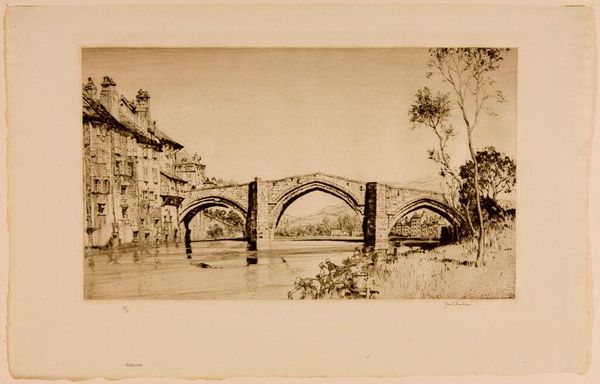
photography
#
16_19th-century
#
black and white photography
#
impressionism
#
sculpture
#
landscape
#
historic architecture
#
street-photography
#
photography
#
romanticism
#
monochrome photography
#
19th century
#
men
#
water
#
cityscape
#
post-impressionism
#
statue
#
monochrome
Copyright: Public domain
Curator: Eugène Atget's photography, and particularly this piece titled "Pont Marie", plunges us right into the heart of Parisian life. Editor: There’s a definite stillness. The shadows play beautifully with the cobblestone and water, creating a dreamy yet haunting tableau. Curator: It’s so evocative, isn’t it? Atget, though largely unacknowledged in his time, documented a changing Paris, a city undergoing modernization. Editor: Absolutely. You can almost smell the damp stone, hear the echoes under the bridge. I imagine these bridges bore witness to everything - revolutions, whispered romances. Curator: It’s quite telling, isn’t it, that he focused not so much on the grand boulevards but on these quiet corners, capturing what others overlooked. I see the remnants of pre-Haussmannian Paris. Editor: The social dynamics are palpable. There's an awareness that public space wasn't just accessible, but instrumental in creating community, something potentially under threat. The scale of the bridge itself dwarfs any individuals. Curator: Indeed, there’s a loneliness, despite the figures. Though some call his style romantic, there is something undeniably matter-of-fact. His genius was that his lens was like a neutral observer and was there at all. Editor: But what constitutes neutrality when you choose where to point the camera? Doesn't selection bias inherently shift any objectivity, placing particular people, structures, and events at the forefront of urban representation? Curator: True. Even then, maybe he chose his subjects based on his own gut feeling. If a certain light attracted him and captured the core and feel of Paris he's looking for then so be it. Editor: It's precisely this act of framing that imbues these places with complex narratives. This seemingly innocent portrayal masks deeper considerations of the societal transformations underway. Curator: What began as documentarian intention transforms, with distance, into something altogether more elusive and layered. Editor: Yes, seeing art, is also seeing it now, not only what has been.
Comments
No comments
Be the first to comment and join the conversation on the ultimate creative platform.
